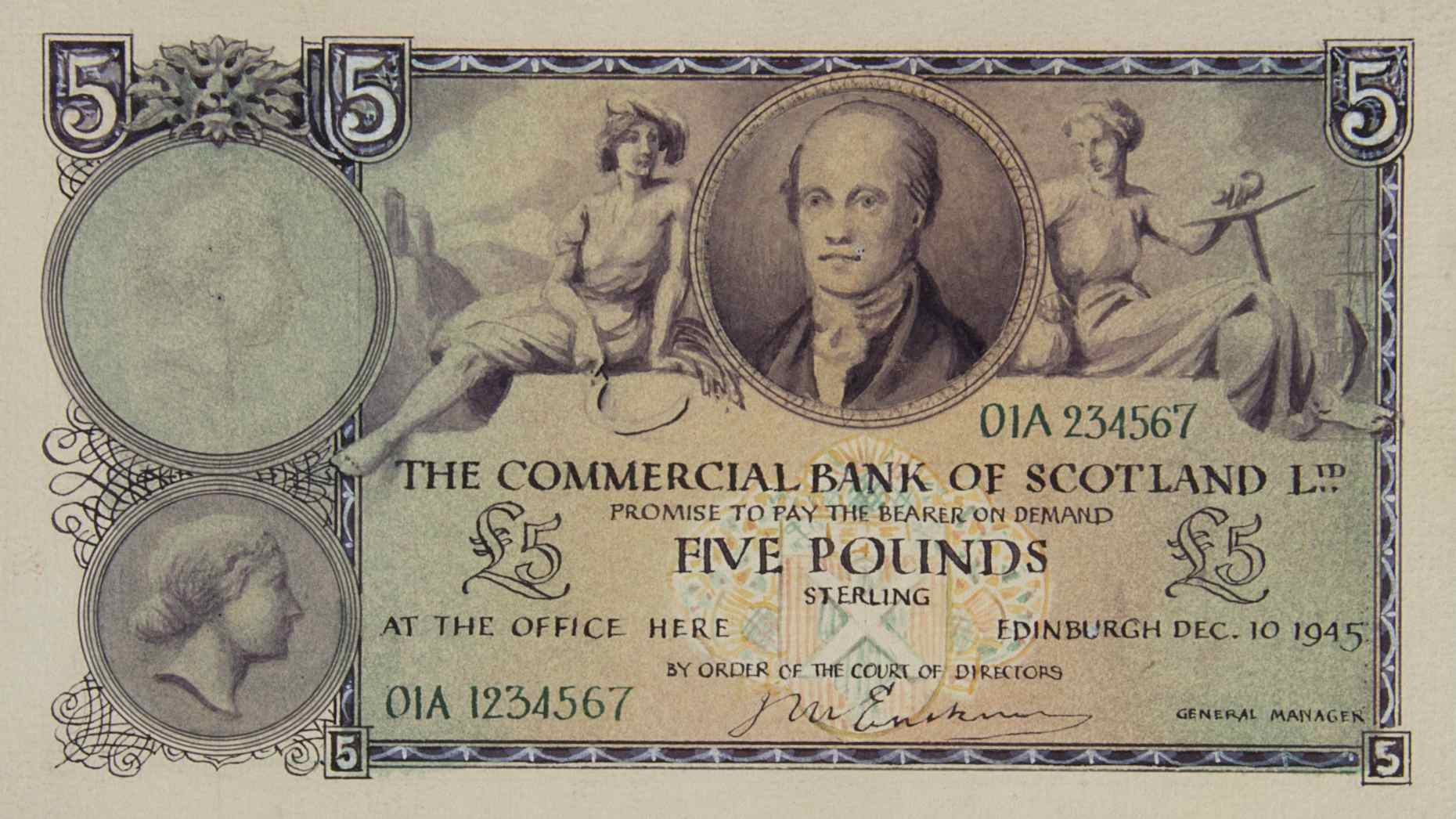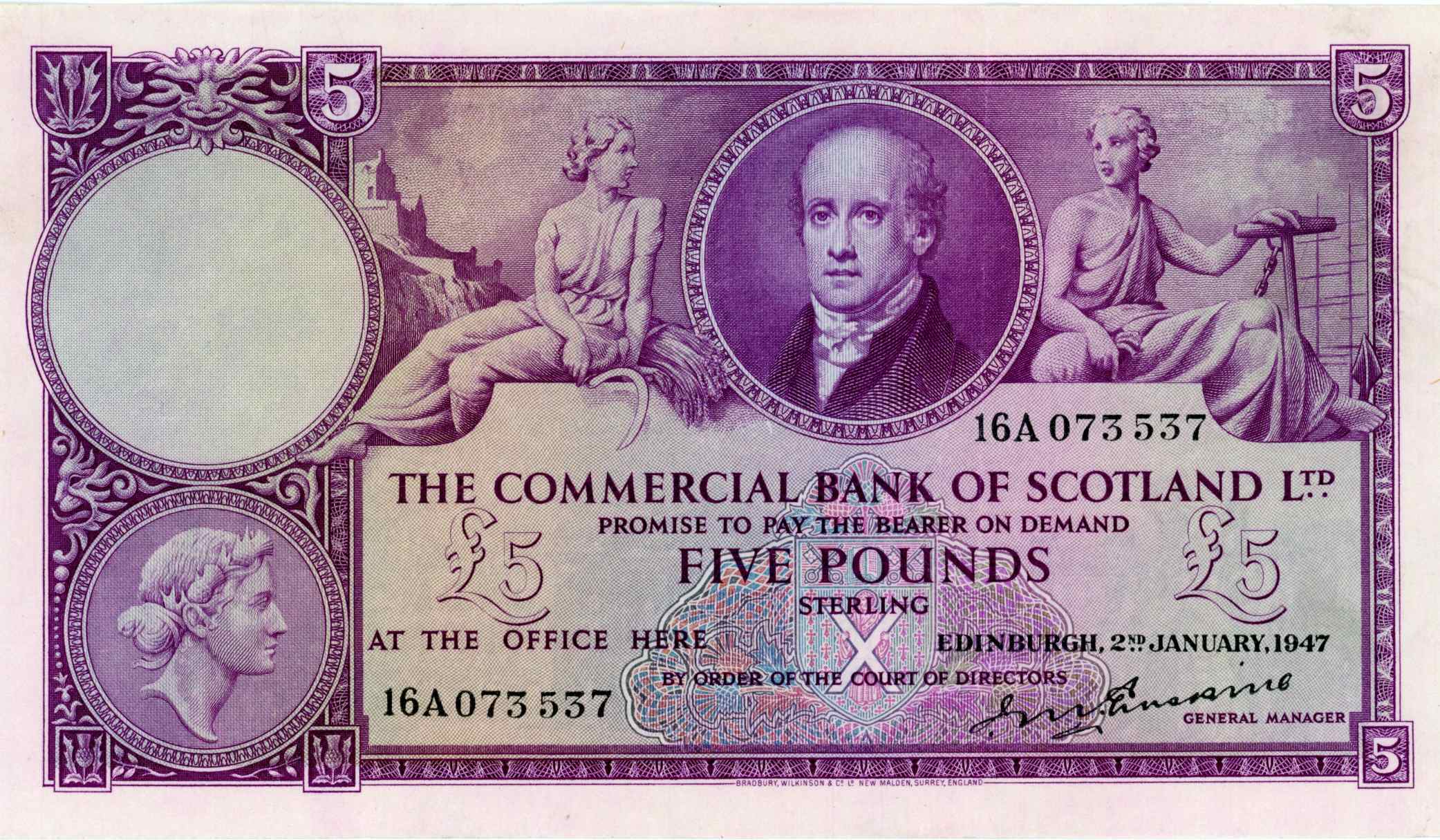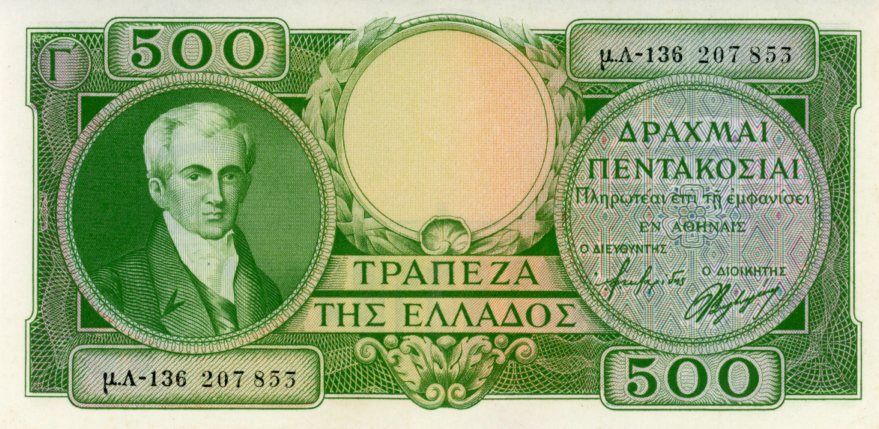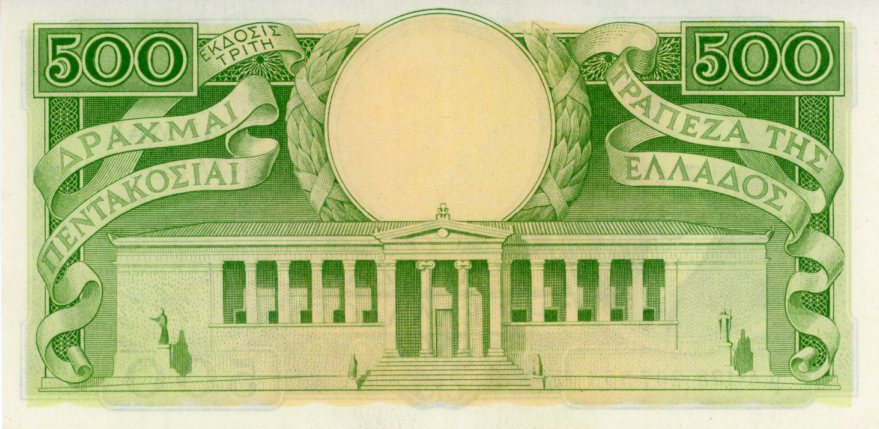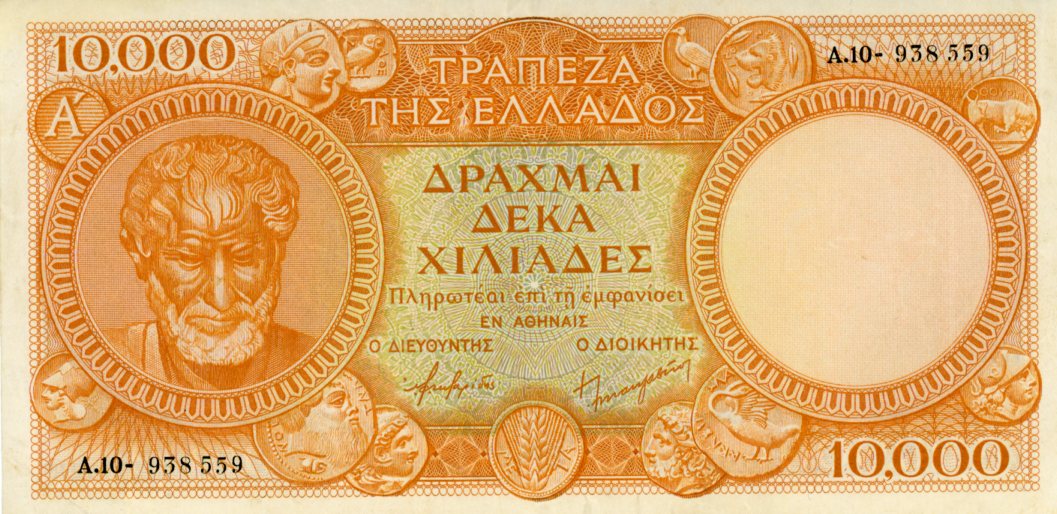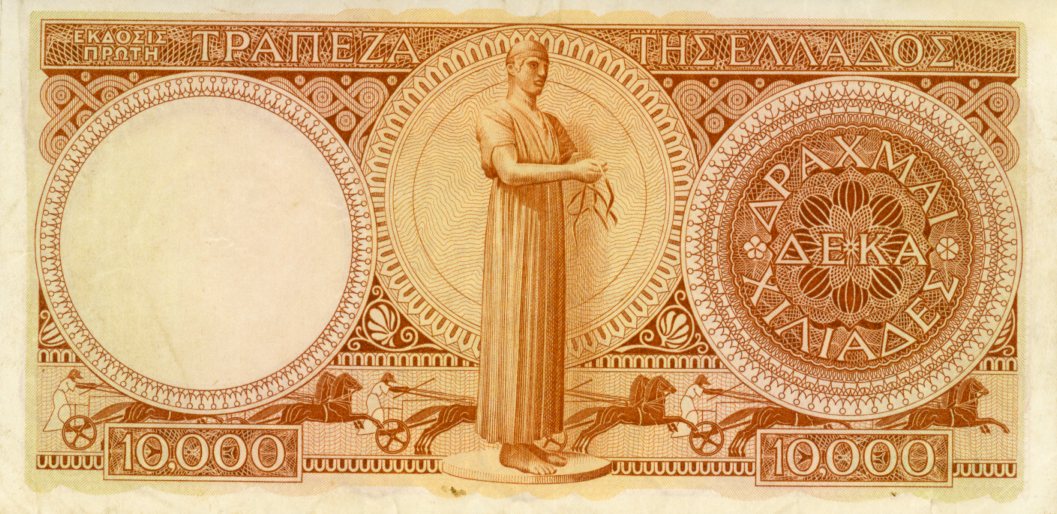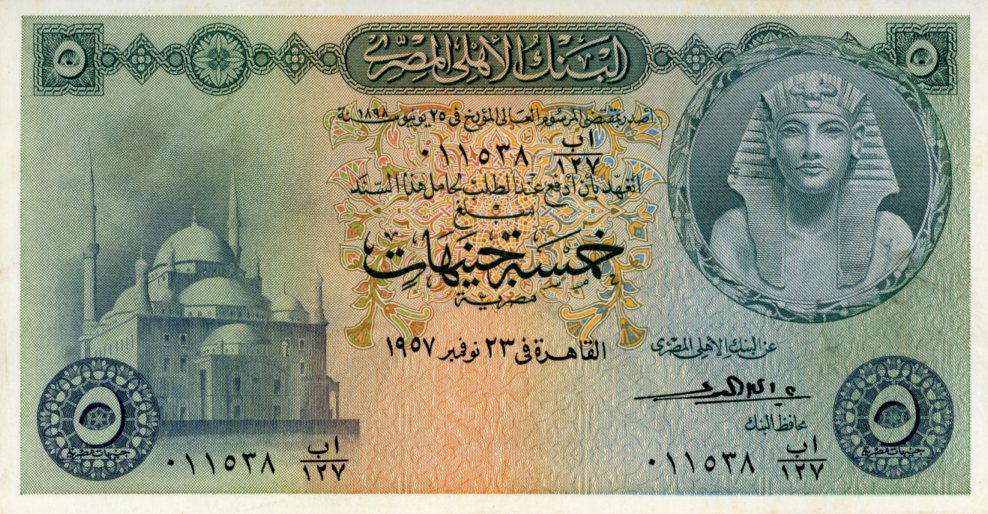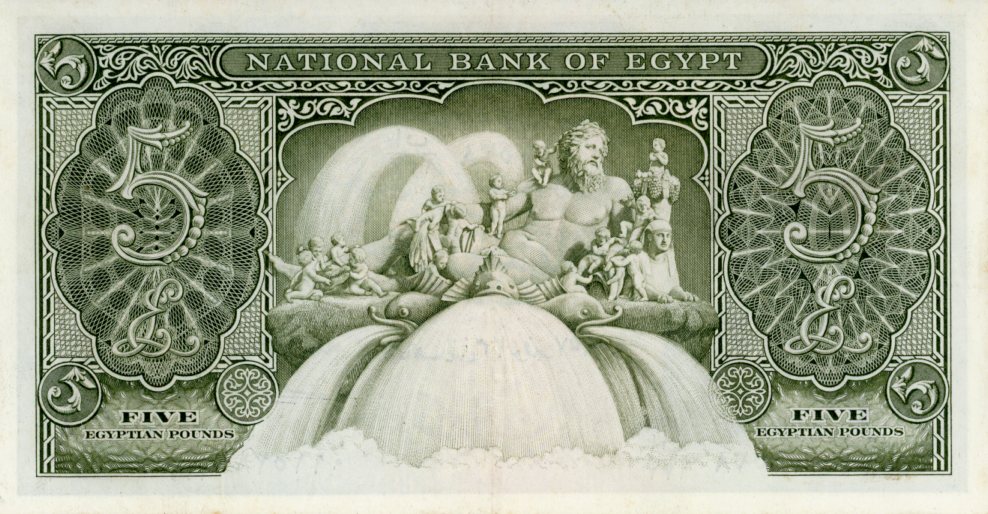Banknotes designed by Stephen Gooden
Stephen Gooden (1892-1955) was an artist and engraver, mainly on copper. In 1932 he was appointed as an advisor in bank note design to the Bank of England after submitting some trial designs. He then designed several banknotes, none of which were actually used, for various reasons. Some of these designs can be seen by clicking on the external links below to Google Arts & Culture:
- A design for a 10 shillings bank note, front
- A design for a 10 shillings bank note, reverse
- A design for a £1 bank note, front
- A design for a £1 bank note, front
- A design for a £1 bank note, front, about 1932
- A design for a £1 bank note, reverse, about 1933
Just before Gooden died in 1955 he finished designing a new £5 note. It was issued on 21st February 1957, two years after his death, and was the first coloured £5 bank note issued by the Bank of England. All previous £5 notes had been printed in black ink on white paper. The 'Helmeted Britannia' or 'Lion and Key' banknote, known as Series B by the Bank of England, was withdrawn from circulation in 1967.
Perhaps because of his selection by the Bank of England, Stephen Gooden was also made an advisor to the security printer Bradbury Wilkinson from about 1933 and contributed to the design of currency for the following banks: Commercial Bank of Scotland; National Commercial Bank of Scotland; South African Reserve Bank; Bank of Greece; National Bank of Egypt; Government of Mauritius; Britis Caribbean territories; and the Bank of Rhodesia and Nyasaland. He may not have designed the whole note, but probably contributed parts of the notes such as a coat of arms, figures or banners for lettering.
Examples of notes from my collection are shown in low resolution, below.
(Page updated on 27/5/2025)
Bank of England
Denomination: Five pounds, £5
Date of first issue: 1957
Date of withdrawal: 1967
Note size: 90 x 159 mm
Catalogue numbers: BE97; B.280 O’Brien; Pick 371 and 372
Notes: The Bank of England call this note 'Series B'. It is known to collectors as the 'Helmeted Britannia' or as the 'Lion and key' five pound note.
Commercial Bank of Scotland
Denomination: One pound, £1
Date of first issue: 1947
Date of withdrawal: 1953
Note size: 83 x 151 mm
Catalogue number: Pick S332
Notes:
Commercial Bank of Scotland
Denomination: Five pounds, £5
Date of first issue: 1947
Date of withdrawal: 1953
Note size: 83 x 151 mm
Catalogue number: Pick S332
Notes: The upper picture is the original design in watercolours on paper for the £5 note, shown in the lower image. The design was changed a little for the final banknote. I like the fact that the sickle was shown curved away from the face of Lord Curzon, the first Chairman of the Bank, in the printed design.
Bank of Greece
Denomination: 100 drachmai
Date of first issue: 1944
Date of withdrawal:
Note size: 73 x 146 mm
Watermark: Head of man
Catalogue number: Pick 170
Notes: The figure on the reverse of the note and the lettering banners look like the work of Stephen Gooden. The correspondence in the Bank of England archive indicates that he deaigned the note.
Bank of Greece
Denomination: 500 drachmai
Date of first issue: 1944
Date of withdrawal:
Note size: 75 x 150 mm
Watermark: Head of man
Catalogue number: Pick 171a
Notes: The figure on the front is the statesman, Capodistrias. The reverse shows the University of Athens.
Bank of Greece
Denomination: 1000 drachmai
Date of first issue: 1944
Date of withdrawal:
Note size: 81 x 160 mm
Watermark: Head of man
Catalogue number: Pick 172
Notes: The figure on the reverse of the note and the seated lions on plinths look like the work of Stephen Gooden. He may well have had an influence on the hexagonal shapes and the foliage, too.
Bank of Greece
Denomination: 10,000 drachmai
Date of first issue: 1945
Date of withdrawal: 1955
Note size: 89 x 181 mm
Watermark: Head of man
Catalogue number: Pick 174
Notes: The figure on the left is Aristotle. It's hard to identify anything specific to Stephen Gooden, but the correspondence in the Bank of England archives shows that he designed the note, including the watermark, which was engraved by Portals.
South African Reserve Bank
Suid Afrikaanse Reserwe Bank
Denominations: 10 shillings / 10 sjielings; then 1 rand
Date of first issue in shillings: 1949
Date of withdrawal in shjillings: 1961
Date of first issue in rand: 1961
Date of withdrawal in rand: 1965
Note size: 78 x 137 mm
Catalogue numbers: Pick 90 and 91
Notes: These banknotes were issued in two languages, Africaans and English, but in two versions: one with Africaans spelling of the bank and the Africaans spelling of the denomination above the English spelling, and the other way round with the name of the bank in English at the top.
The notes were first issued in shillings, from 1949 to 1961, and then in rand when the currency was changed.
The design on the reverse, of the lion on a circle of rope is characteristic of Gooden.
South African Reserve Bank / Suid Afrikaanse Reserwe Bank
Denominations: 1 pound / 2 rand
Date of first issue in pounds: 1949
Date of withdrawal in pounds: 1961
Date of first issue in rand: 1961
Date of withdrawal in rand: 1965
Note size: 84 x 150 mm
Catalogue numbers: Pick 92 and 93 in Pounds
Notes: This is the later, rand version of the bank note which was first issued in pounds from 1949 to 1961. These banknotes were issued in two languages, Africaans and English, but in two versions: one with Africaans spelling of the bank and the denomination above the English spelling, and the other way round with the name of the bank in English at the top.
The design on the reverse, of the lion on a circle of rope is characteristic of Gooden.
South African Reserve Bank / Suid Afrikaanse Reserwe Bank
Denominations: 5 pounds / 10 rand
Date of first issue in pounds: 20th November 1948
Date of withdrawal in pounds: 1959
Date of first issue in rand: 1961
Date of withdrawal in rand: 1965
Note size: 91 x 164 mm
Catalogue numbers: Pick 94 (English on top), Pick 95 (Africaans on top)
Notes: The note shown left is the Africaans-first version of the bank note which was first issued in pounds from 1948 to 1959. These banknotes were issued in two languages, Africaans and English, but in two versions: one with Africaans spelling of the bank and the denomination above the English spelling, and the other way round with the name of the bank in English at the top.
The ship on the back is an Amsterdam Flute, an accurate rendering of the ship that carried Jan van Riebeeck to Table Bay in 1652. Gooden engraved this ship separately and intended to submit it to the Royal Academy as his presentation plate but, for copyright reasons, did not.
National Bank of Egypt
Denomination: 5 pounds
Date of issue: 1952
Date of note: 1957
Date of withdrawal: 1961
Note size: 89 x 175 mm
Catalogue number: Pick 31
Notes: This is the second issue of this note, with Tutankhamun on the front. The first issue, used from 1946-1951, showed King Farouk on the front but was otherwise similar (Pick 25). The front depicts the Citadel of Cairo and the rear depicts the source of the Nile. The watermark is a flower.




